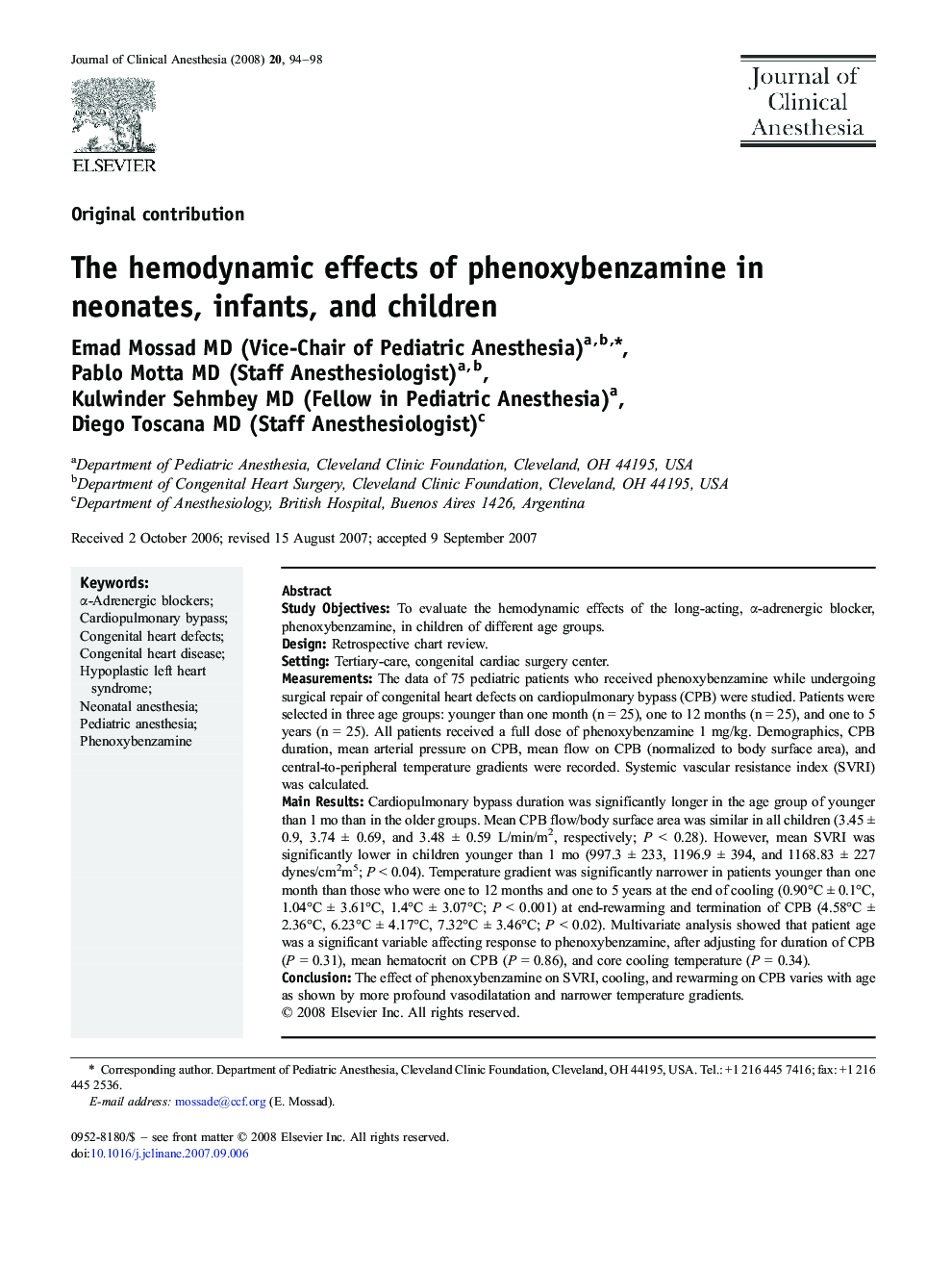| Article ID | Journal | Published Year | Pages | File Type |
|---|---|---|---|---|
| 2764169 | Journal of Clinical Anesthesia | 2008 | 5 Pages |
Study ObjectivesTo evaluate the hemodynamic effects of the long-acting, α-adrenergic blocker, phenoxybenzamine, in children of different age groups.DesignRetrospective chart review.SettingTertiary-care, congenital cardiac surgery center.MeasurementsThe data of 75 pediatric patients who received phenoxybenzamine while undergoing surgical repair of congenital heart defects on cardiopulmonary bypass (CPB) were studied. Patients were selected in three age groups: younger than one month (n = 25), one to 12 months (n = 25), and one to 5 years (n = 25). All patients received a full dose of phenoxybenzamine 1 mg/kg. Demographics, CPB duration, mean arterial pressure on CPB, mean flow on CPB (normalized to body surface area), and central-to-peripheral temperature gradients were recorded. Systemic vascular resistance index (SVRI) was calculated.Main ResultsCardiopulmonary bypass duration was significantly longer in the age group of younger than 1 mo than in the older groups. Mean CPB flow/body surface area was similar in all children (3.45 ± 0.9, 3.74 ± 0.69, and 3.48 ± 0.59 L/min/m2, respectively; P < 0.28). However, mean SVRI was significantly lower in children younger than 1 mo (997.3 ± 233, 1196.9 ± 394, and 1168.83 ± 227 dynes/cm2m5; P < 0.04). Temperature gradient was significantly narrower in patients younger than one month than those who were one to 12 months and one to 5 years at the end of cooling (0.90°C ± 0.1°C, 1.04°C ± 3.61°C, 1.4°C ± 3.07°C; P < 0.001) at end-rewarming and termination of CPB (4.58°C ± 2.36°C, 6.23°C ± 4.17°C, 7.32°C ± 3.46°C; P < 0.02). Multivariate analysis showed that patient age was a significant variable affecting response to phenoxybenzamine, after adjusting for duration of CPB (P = 0.31), mean hematocrit on CPB (P = 0.86), and core cooling temperature (P = 0.34).ConclusionThe effect of phenoxybenzamine on SVRI, cooling, and rewarming on CPB varies with age as shown by more profound vasodilatation and narrower temperature gradients.
